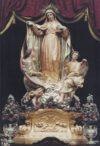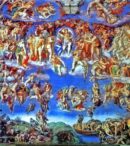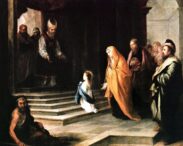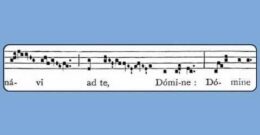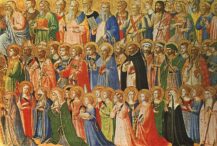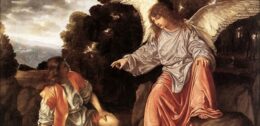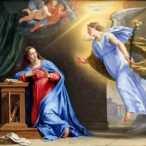There was a lot of head scratching among the Faithful this Sunday morning! It was the 24th Sunday after Pentecost. What Mass will Father be saying? Fifth Sunday after Epiphany? What? Epiphany was 43 Sundays ago! Why is that!? Here is the explanation:
The liturgical year is divided into two broad cycles. The first is the Incarnation Cycle, and it is centered around Christmas, the date of which is fixed. The Incarnation Cycle begins on the first Sunday of Advent and continues through the Sundays after Epiphany.
The other cycle is the Paschal Cycle, and it is centered around Easter, which date can vary by as much as 5 weeks. Easer can be as early as March 22 and as late as April 25. The Paschal Cycle follows the Incarnation Cycle and begins on Septuagesima Sunday, which, correspondingly, can vary by 5 weeks.
Epiphany is, of course, always January 6. Given the 5-week variance in the date of Septuagesima Sunday, there can be as few as one and as many as six Sundays after Epiphany.
The date of Pentecost is a fixed number of days (50) after Easter, and so it, too, varies by 5 weeks. There can thus be as few as 23 and as many as 28 Sundays after Pentecost.
Note that the number of Sundays after Epiphany plus those after Pentecost will always sum to 29. So, for example, this year, 2021, Easter was on April 4th, in the middle of the range, and there were three Sunday after Epiphany. Thus, there will be 26 Sundays after Pentecost.
Regardless how many Sundays after Pentecost there will be, there is a specific Mass to be said for the ***Last ***Sunday after Pentecost. And the 23rd Sunday after Pentecost has its own Mass. The problem comes in when there are more than 24 Sundays after Pentecost. We need some extra Masses. Where do they come from?
There are six separate Masses for the Sundays after Epiphany. When there are fewer than six Sundays after Epiphany, those Masses are paused until the need arises for them between the 23rd and the Last Sunday after Pentecost. At that point, the paused Sundays are resumed. In fact, these are referred to as Resumed Sundays. You can need as many as four. Which ones do you use? The table below shows the 6 possibilities. (Note that you will find a similar table in your Missal.)
As it turns out, this year, we will need to use two Resumed Sundays, and so, this Sunday, we used the 5th and next Sunday we will use the 6th, and then the following Sunday, we will use the specific Mass for the Last Sunday after Pentecost.
Interestingly, while the various readings change for each of the six Sundays (from 23rd to 28th), the five propers sung by the Schola (Introit, Gradual, Alleluia, Offertory, and Communion) do not change.
As a simple Sunday after Pentecost, this Sunday Sunday was a second-class feast. Thus Father and the altar were wearing green, and so, we sang Mass IV (for Ordinary Feasts). And as we do, we paired that with Credo IV.
November is the month of the Holy Souls and so we sang Help, Lord, the Souls as the processional. This is an extraordinary hymn, the lyrics of which are essentially a catechism of Catholic teaching on Purgatory.
At the Offertory, we once again implored Our Lady for relief from the current pestilence, singing Stella Coeli Extirpavit.
At the Communion, again with the Holy Souls in mind, we sang Languentibus in Purgatorio.
This was the first Sunday of the month so the men of the Holy Name Society made their observances and we sang the rousing Holy Name Anthem (We stand for God) as the recessional.
And finally, as a meditative piece after Mass, again in honor of the Holy Name, we sang Jesu Dulcis Memoria, Vespers hymn from the Feast of the Holy Name.
